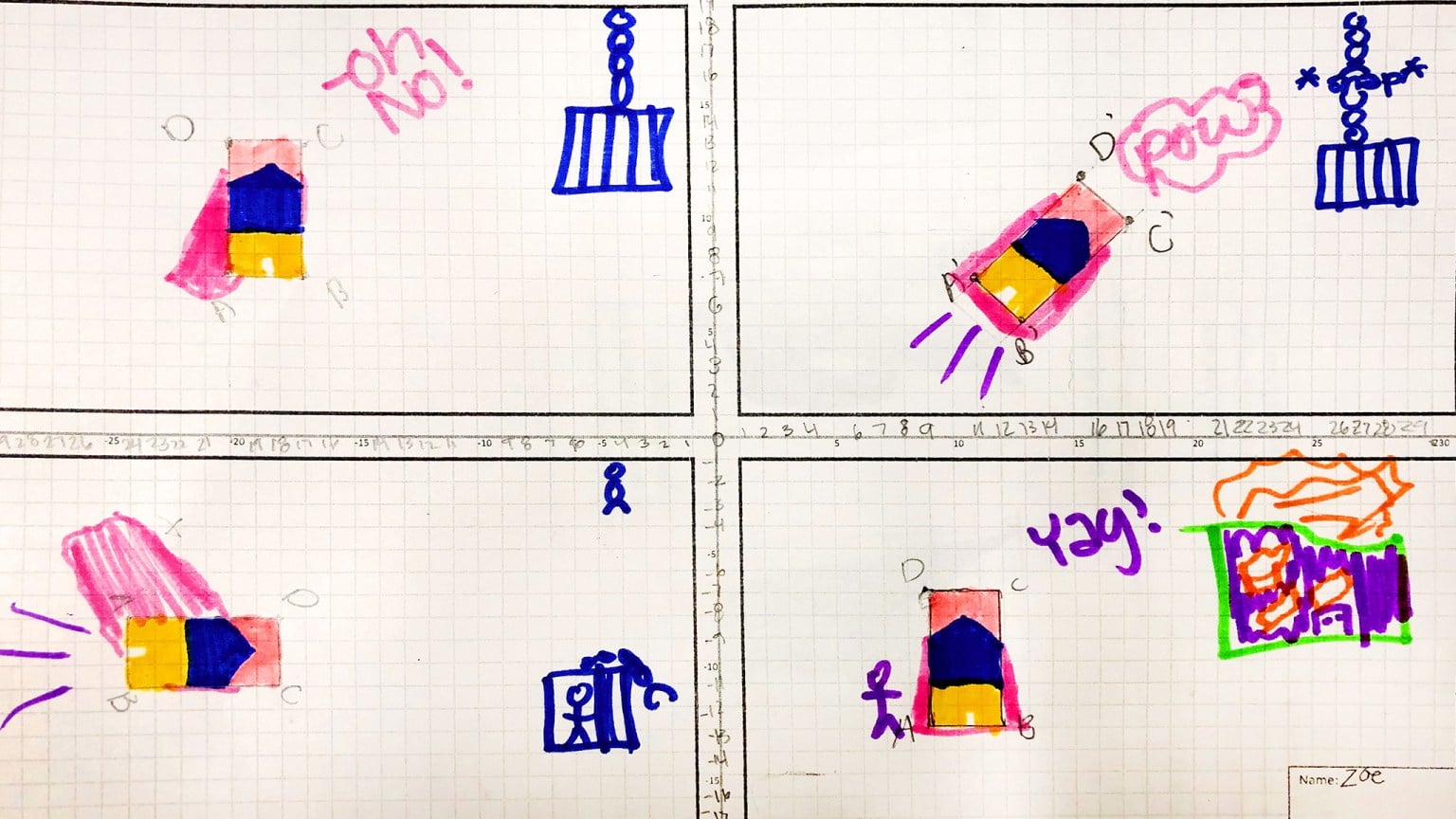Superhero Transformations
Grade 8, 90-150min
In the Superhero Transformations project, students design their own simple superhero and distill it down to its core geometric shape. Students choose a story stem and write a short story about their superhero. Students then draw their hero’s shape into the first panel of a four-panel graph paper comic strip template, and use geometric transformations (translations, rotations and reflections) to make their character appear in the remaining three panels. Finally, students fill in the remaining visual elements needed in each panel (villains, backgrounds, props, etc). This project was adapted from a lesson by Karen Stafford.

Topics addressed
- Geometric transformations: translations, reflections and rotations
- Primary CT concept: algorithmic thinking. Students have to come up with the correct sequence of transformations to properly position their superheroes within each panel. Students also leverage abstraction when they simplify the shape of their hero, and decomposition when they break their story down into a fixed number of comic panels.
Students will be able to
- Use translations, reflections and rotations to move a geometric shape around the coordinate plane
- Create a visual story about a superhero of their own design
Materials
Suggested lesson breakdown
This activity is more of a practice/synthesis tool than a teaching tool, and therefore works best towards the end of the unit. You can decide whether to keep students together when working through each step, or whether they can self-pace through the project.
- 10min – introduce project, go over requirements and grading rubric
- 5-10min – students create and draw their own superhero
- 5-10min – students create a simplified geometry version of their superhero
- 10-15min – students write a short story for their superhero using one of three story stems
- 10-15min – students break down their story visually into four comic panels
- 40-60min – students place their hero in the first panel and use geometric transformations to move him or her into each subsequent panel, recording the coordinates of each vertex within each panel
- 15-30min – students finalize their comic strip by adding backgrounds, characters, props, etc.
Common Core standards
-
CCSS.Math.Content.8.G.A.2
Understand that a two-dimensional figure is congruent to another if the second can be obtained from the first by a sequence of rotations, reflections, and translations; given two congruent figures, describe a sequence that exhibits the congruence between them. -
CCSS.Math.Content.8.G.A.3
Describe the effect of dilations, translations, rotations, and reflections on two-dimensional figures using coordinates. -
CCSS.Math.Content.8.G.A.4
Understand that a two-dimensional figure is similar to another if the second can be obtained from the first by a sequence of rotations, reflections, translations, and dilations; given two similar two-dimensional figures, describe a sequence that exhibits the similarity between them.




